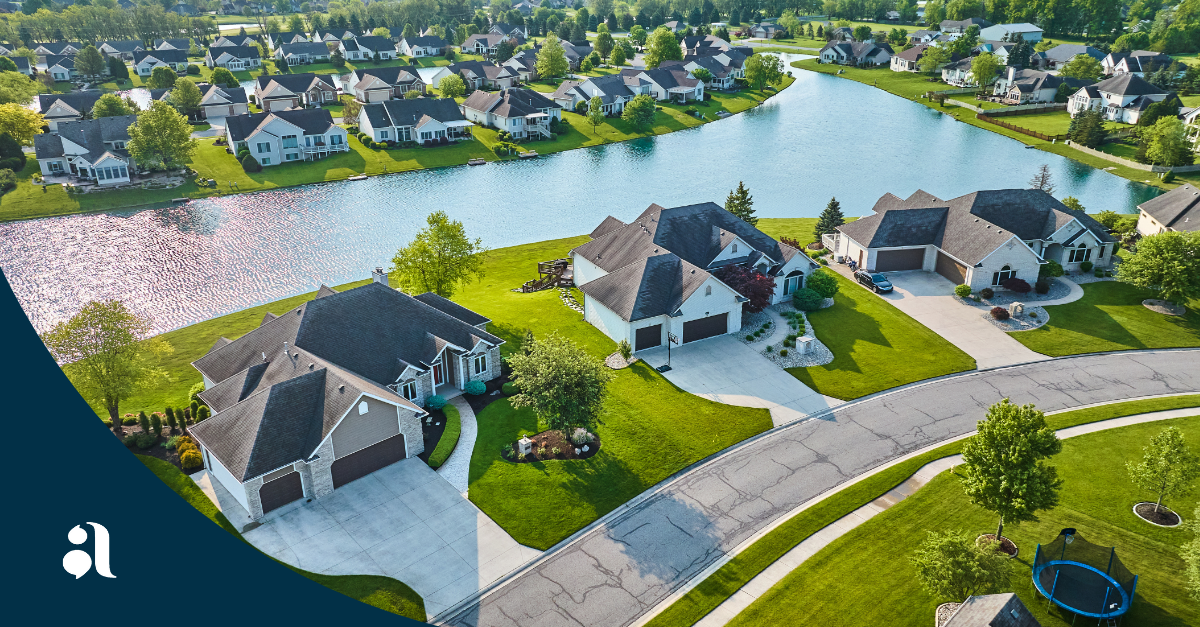
Build Belonging with a Property Manager Communication Tool
Property Manager Communication Tool
When Sarah moved into her new master-planned community, she expected quiet streets, neatly trimmed lawns, and the occasional email from the HOA. What she didn’t expect was a personalized welcome message, a notification about a Saturday morning yoga class, and a push alert inviting her to a pop-up coffee event at the clubhouse.
At first, she assumed it was all coincidence. But as the weeks went on, Sarah realized this wasn’t just lucky timing. It was by design.
Behind the scenes, a property manager communication tool was doing more than sending reminders—it was crafting an experience. It was helping her feel at home, even before she knew her neighbors’ names.
That’s the difference between communities that manage homes—and communities that create belonging. And it all starts with how you communicate.
What Is a Property Manager Communication Tool?
Traditionally, property managers communicated with residents through bulk emails, notices on doorsteps, or printed newsletters folded under doormats. These methods often felt cold, impersonal, and easy to ignore.
A modern property manager communication tool replaces those outdated channels with a central platform—typically mobile-first—that allows community teams to send tailored, timely, and meaningful updates. These tools aren’t just about delivering information. They’re about shaping how residents experience their day-to-day life.
For example, instead of sending a mass email about a pool closure, a modern tool allows managers to:
- Send a push notification only to those who’ve reserved pool time that day
- Include a clear explanation and estimated reopening time
- Suggest alternate amenities that residents can use nearby
This shift isn’t minor—it’s transformative. Residents get only what matters to them, when it matters. Communication becomes something they value—not something they dread.
A great tool doesn’t just inform. It creates trust. It makes people feel considered. And it helps managers lead with empathy instead of enforcement.
The Evolution of the Property Manager Role
The title “property manager” used to mean one thing: maintain order, ensure compliance, and keep the grass mowed. Today, that definition barely scratches the surface.
In modern master-planned communities, property managers become community managers and must wear multiple hats. They’re part caretaker, part concierge, and part community builder. Their responsibilities now include onboarding new residents, promoting events, managing amenities, listening to feedback, and preserving the culture of the neighborhood.
But with evolving expectations comes a need for evolving tools.
Property managers in planned communities can no longer rely on email chains or printed flyers. They need systems that:
- Segment messages by location, topic, or interest group
- Allow instant messaging for urgent notices
- Provide residents with a self-service hub for events, updates, and FAQs
This evolution isn’t just about doing more—it’s about doing the right things in smarter ways. A modern property manager communication tool empowers managers to lead proactively, not reactively. To foster engagement, not just enforce policies.
It supports a new identity: not just rule enforcers, but trusted facilitators of a vibrant, connected lifestyle.
Why Traditional Communication Methods Fall Short
Old-school communication tools don’t just feel clunky—they actively get in the way of creating a sense of community.
A paper notice pinned to the clubhouse door might fulfill a requirement. But it doesn’t make anyone feel cared for.
Here’s why traditional methods fail modern communities:
- They lack personalization. Everyone gets the same message, regardless of their situation or interest.
- They’re often ignored. Emails get buried, flyers go unnoticed, and apps are deleted after the first use.
- They create frustration. Residents don’t know what’s relevant, what’s new, or who to reach out to.
- They’re one-way. Feedback gets lost. Questions go unanswered. People stop listening.
Even worse, these tools tend to focus solely on compliance—violations, fees, maintenance—leaving no space for celebration, recognition, or community life.
Modern residents expect more. And with the right platform, property managers can deliver better—and with less effort.
Introducing Alosant’s Branded App: More Than a Communication Tool
Alosant offers more than just messaging. We provide a branded mobile app platform purpose-built for lifestyle-oriented communities—designed to help community managers and property managers move beyond transactional communication and into true community engagement.
Alosant’s app becomes the digital heart of the community. It's not just another portal. It’s a fully branded, resident-facing platform where communication, amenities, programming, and updates live in harmony—with your community’s voice and values front and center.
With Alosant, property managers can:
- Send targeted push notifications with tone, context, and timing
- Set up automated workflows for onboarding, event follow-ups, and communityalerts
- Offer a one-stop app for residents to RSVP, book amenities, and view personalized updates
- Customize the experience to match your brand—not ours
Unlike off-the-shelf HOA tools, Alosant is built with you—not just for you. We don’t force communities to fit into a generic system. Instead, we craft digital infrastructure that enhances your brand and supports the real-life experiences you’re working to deliver.
With Alosant, every message, update, or interaction is an opportunity to reinforce what your community stands for—and how it feels to live there.
The Psychology of Community Communication
Community communication isn’t just logistical—it’s deeply emotional.
Every message, notification, or update tells your residents something about who you are—and how much you care. The tone, frequency, and relevance of those touchpoints directly influence how welcome, safe, and connected people feel.
This is where most legacy communication systems fall short. They treat messaging as a task. But residents experience it as a reflection of their community.
At Alosant, we designed our platform to elevate every touchpoint into something personal. Something human.
Consider this:
A legacy system might send:
Subject: HOA Violation – Trash Bins Not Removed
“Reminder: You have violated rule 7.5. Trash bins must be stored by 8 a.m.”
That’s technically accurate—but emotionally disconnected.
An Alosant-powered push notification might say:
“Hi there! Just a quick reminder, your neighborhood’s trash day is every Monday. Make sure to roll in your trash bins by 8 a.m. today. We appreciate your help in keeping the neighborhood looking its best!”
The message is the same. But the tone, the timing, and the impact are entirely different.
The first erodes trust. It can make residents feel policed.
The second builds goodwill. It creates a culture of collaboration.
The Real Difference: Transactional vs. Relational Communication
Without Alosant, many property managers communicate only when something goes wrong—fees due, violations issued, complaints made. That trains residents to associate the property team with negative experiences.
With Alosant, your team can show up proactively, positively, and consistently. You can:
- Greet new residents with a welcome packet and events calendar
- Notify families about weekend activities at the park
- Highlight community wins, like a successful event or resident-led initiative
- Celebrate birthdays, volunteer efforts, or seasonal programs
- Invite feedback with kindness, not just enforce rules
And because it's all managed within one branded app, the experience feels cohesive—not clunky.
Residents stop seeing “the HOA” as a faceless entity. They start seeing it as a partner in their lifestyle.
That’s the shift Alosant is here to make. From transactional enforcement to relational engagement. From sending messages to building meaning.
Common Communication Mistakes—and How Alosant Helps Avoid Them
Even experienced property managers can fall into communication traps that erode resident trust—often because their tools don’t support modern expectations. Alosant helps avoid these missteps by making best practices easy, accessible, and automatic.
Mistake 1: Sending one-size-fits-all messages
Generic email blasts that go to every resident—regardless of relevance—cause message fatigue. People stop reading. Important updates get missed.
How Alosant helps:
With Alosant, you can segment residents by neighborhood, home type, move-in date, amenity usage, or even event participation. That means a push about the gear garage only goes to residents who use it. A holiday decoration contest invite only goes to those in the single-family phase. Personalized relevance leads to higher engagement and happier residents.
Mistake 2: Cold, impersonal tone
Even well-meaning updates can create tension. Tone and timing matters—and most tools don’t help managers get it right.
How Alosant helps:
Alosant ensures the right message reaches the right person at the right time. With customizable user groups, you can target specific audiences, like notifying just one neighborhood about a street closure, without overwhelming the entire community. This approach builds trust without building frustration.
Mistake 3: Inconsistent timing and delivery
Last-minute notices or buried reminders lead to confusion. Managers often struggle to maintain consistent schedules across different topics.
How Alosant helps:
With scheduling tools and recurring message options, Alosant ensures your team communicates early, clearly, and consistently. You can prepare an entire quarter of updates in one afternoon—and trust the system to deliver them on time, every time.
A Day in the Life with Alosant
Let’s walk through what a typical Monday might look like for a property manager using Alosant:
7:30 AM
You get a weather alert. Rain expected. You tap a button in the Alosant admin to reschedule this evening’s outdoor concert and push a message to all who RSVP’d.
8:15 AM
You check resident engagement over coffee. 85% of new homeowners opened the sales newsletter. 20 RSVPs already in for next week’s builder open house.
10:00 AM
Pickleball courts are dry, no need to reschedule reservations.
2:30 PM
You review feedback from Saturday’s Fall Fest. Ratings are high. You copy the message template and reuse it for the Winter Market launch.
4:00 PM
You schedule five notifications for next week: a reminder about landscape trimming, a community spotlight, pool hour changes, and two holiday invites—each personalized to the right segment.
End of day?
Your inbox is quiet. Your app admin is active. Your community is informed—and engaged.
That’s the Alosant difference: less chasing, more connecting.
Turning Frustration into Community Wins
Without the right tools, small problems can become big ones. Confusion, lack of notice, or poorly worded updates can turn into complaints, negative emails, or board pressure.
Let’s return to a real example: a construction project required portable restrooms on one street. Residents were frustrated. Without context, it felt careless.
Without Alosant:
An email gets sent two days late. Residents reply angrily. The message feels cold and vague.
With Alosant:
A push notification is sent to only the affected homes:
“Thanks for your patience as Lot 38 completes construction. Temporary restrooms will be removed Friday. To say thanks for your flexibility, enjoy donuts at the clubhouse Saturday morning.”
Residents feel seen. Frustration turns to understanding. And your team earns trust—not backlash.
These moments matter. And Alosant makes them manageable.
Lifestyle Programming, Amplified
Events and perks aren’t just extras—they’re key to why people move into and stay in lifestyle communities. But if no one knows what’s happening, or can’t RSVP easily, participation suffers.
Alosant supports the full event lifecycle:
- Display events in a scrollable feed with eye-catching visual tiles
- Send invitations to targeted segments
- Auto-manage RSVPs and waitlists
- Push reminders 24 hours before
- Collect feedback after for future planning
- Reuse successful event templates easily
Whether you’re hosting a wine tasting, family movie night, builder showcase, or fitness series, Alosant removes the manual work and amplifies the outcome.
Resident Retention and Referrals Start with Alosant
People stay where they feel seen. And they refer others when they feel proud of where they live.
Alosant helps create that environment from day one:
- New residents receive a personalized welcome, access to events, and onboarding content
- Ongoing updates make them feel informed, not forgotten
- Events and amenities are easy to access and easy to share
- Positive tone and consistent communication reduce churn and increase engagement
Alosant isn’t just a messaging tool. It’s an investment in the long-term health of your community.
Conclusion
In today’s residential communities, property management is no longer just about upkeep and enforcement—it’s about experience, trust, and connection. A modern property manager communication tool should reflect that shift. With Alosant, you’re not just sending updates—you’re setting the tone for how residents feel, engage, and belong. Whether you’re welcoming a new homeowner, announcing a weekend event, or responding to everyday needs, Alosant helps you do it with clarity, consistency, and care. Because great communities aren’t built on policies alone. They’re built on meaningful communication—and the relationships it creates.
Ready to Modernize Your Community Communication?
Alosant’s branded mobile platform helps property managers move beyond task-based messaging and into meaningful engagement. Whether you're managing amenities, promoting events, or welcoming new residents, our tools are built with you—and designed to amplify your impact. Let us help you create connection, not just compliance.
Book a demo today to see how Alosant can elevate the way your community communicates.
Frequently Asked Questions About Property Management Software
What software do property managers use?
Property managers often use platforms like Buildium, AppFolio, RentRedi, and Alosant. These tools help with communication, rent collection, maintenance tracking, and community engagement. Alosant is uniquely designed for lifestyle communities, offering a branded, resident-facing app that supports events, amenities, and messaging—all in one place.
Is there any free property management software?
Yes, some property management tools offer free plans or trial versions. Examples include TenantCloud (basic tier), Stessa, and Cozy (now part of Apartments.com). However, free options usually offer limited features and may not support larger or lifestyle-driven communities the way paid platforms like Alosant do.
Can you use Excel for property management?
Yes, you can use Excel for basic property management tasks like rent tracking, lease dates, and budgeting. However, it lacks automation, reminders, and secure communication tools. For communities focused on resident experience and scalable operations, platforms like Alosant offer far greater functionality and ease of use.
Further Reading
Community Associations Institute (CAI)
NAR – Technology Trends in Property Management
Community Loyalty Starts Here: PropTech That Delivers
Ways to Automate Real Estate Reporting for Land Developers in 2025
Mobile Access Control: Smarter Living Starts Now



